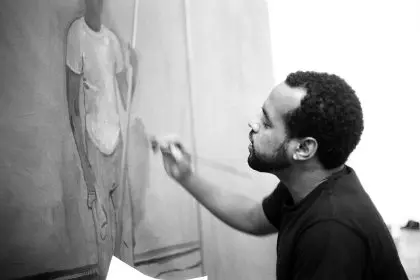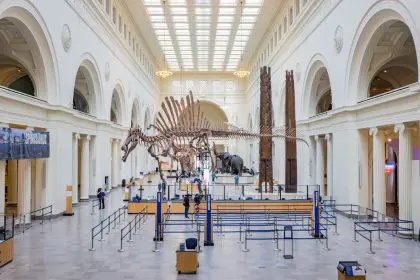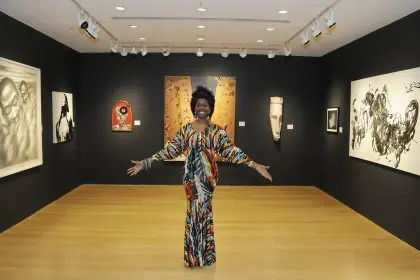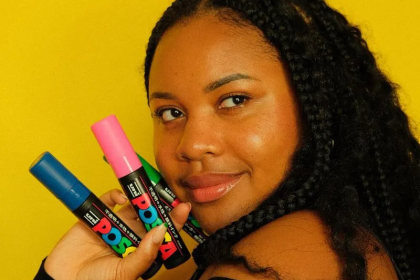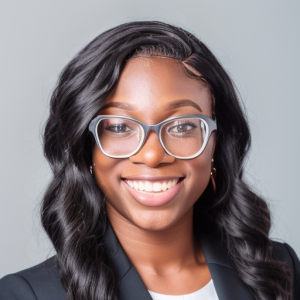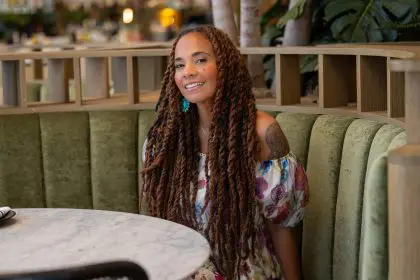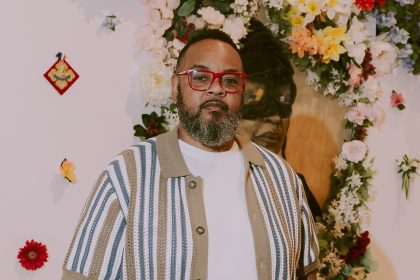From humble beginnings as a young collector seeking Black art in flea markets to founding a groundbreaking multi-media platform, Patricia Andrews-Keenan’s journey embodies the power of purposeful storytelling. As the founder of Pigment International®, she has transformed her passion for Black art into a movement that celebrates, documents, and elevates Black artists’ voices across generations. With a career spanning journalism, corporate communications, and now art advocacy, Andrews-Keenan’s vision has created an unprecedented platform for Black artistic expression.
What inspired you to establish Pigment International?
Pigment International was kind of a culmination of all the skills, the talents, the lived experience that I had up until that time. I came up as a journalism major, historically Black College and University, Gramlin State University. I ended up with a corporate career. I was a regional vice president of corporate communications and marketing in the telecom industry. I worked for Comcast for many years, my own PR firm, where I actually had clients and was exposed to a lot of artists, but I’d always been a collector. I always bought for what I could afford at the time, when I was young I would go to flea markets, I would buy these different pieces that were inexpensive, and as I was able to, I increased that, and then I began to meet black artists, and I thought they had stories to tell, and all of my experiences, writing, doing annual reports in the corporate world, doing newsletters, it was what allowed my avocation and my vocation to meet.
How has your perspective on collecting and preserving black arts and artifacts changed over the decades?
It was always about bringing those images and having those images around me because of the way they make me feel. You want to see yourself in the art on your wall, and no matter if it’s a poster, or whatever it is, you know you want that, and the change in the journey came as I kind of honed in on things that I loved. I love to have women in my artwork, and a lot of my artwork will have women in it, or women and girls, because again, I’m reflecting to know who I am.
I’ve learned more about art, the other thing that I’m now trying to absorb is abstract art. It was always about figurative art for me, and I really enjoy figurative art, because again, it’s reflecting who I am, but now I want to know the artist and understand what those things mean? And so I’m learning about abstract art. I love contemporary art, but I also love historical artists, so I think, as a person grows their taste change, they evolve, and they adapt new things.
Do you have a favorite artist at this moment?
What I started doing this year, I started putting some notes on artists that I wanted to watch. There are a couple that I’ve written for the first of the year, and my big look this year is particularly at women artists. At Pigment, what we’re talking about for this year, and I don’t call it a theme, I don’t call it just something that’s kind of corporately looked at. I call it our North Star. What is leading us, and what are we doing, and what are we following? And our North star is Art, Activism and Empowering Black women. Those are the things that we’ve adopted, that Pigment will push out in all of it’s programming this year. So particularly, black women artists, some of them are historical and some of them are contemporary.
Andra Daans, who lives in Paris and is represented by Blackbird Gallery, is doing some beautiful work in the magazine this year. There’s an African artist, Sesse Elangwe, that I’m looking at, and another artist named Esteban Whitehead, that’s doing interesting things. Sesse is represented by Watercolors Gallery in Memphis, Tennessee, and I just saw his work, there’s a lot of exciting things.
How do you approach storytelling of Black women differently from traditional arts publications?
First off, I am a black woman, so I’m looking for those role models, I’m looking for those examples, I’m looking for those mentors, and when I think about who I am, I’m from Louisiana. I’m born and raised in Louisiana. But the things I’ve learned about art I learned here in Chicago.
So I’m a melding of those two things, and Dr. Margaret Burroughs was a Louisiana born and Chicago bred, and I look at her. When I look historically, I look at her as I’m trying to continue the legacy that she started, and she was very much about legacy.
I actually keep a quote of hers that she wrote in a little book about, what will your legacy be? And in thinking about pigment it was part of that, and I hope that other young people will come along and want to join us and say, How can I perpetuate this legacy? Samella Lewis, who was a prominent artist who passed away, both Dr. Burroughs and Samella Lewis passed away well, into their nineties, and and I think art probably has something to do with keeping you vital and contributing, and so those are the role models I look at.
How do you see Pigment International building upon and expanding that legacy in today’s digital world?
I came out of the cable television industry, and it was then when I came in, much like what we’re seeing with Silicon Valley back then. I’ve always had an affinity for technology. I consider myself an early adapter, and I’ve continued to learn how to do these things, I am a senior citizen, but I love this technology.
So when I built this platform, it had layers, we have a newsletter that we do every week, and we send out 50 weeks a year, and it has art news, it’s aggregated content, it’s original content, it’s profiles, it’s talking to this ecosystem. We talk to gallery owners, we talk to curators, we talk to museums, and then we give that information back in our newsletter. This week, for instance, we talked to a gallery in Bowie, Maryland, a black owned gallery, and they gave us their projections for 2025.
How does Pigment International build upon artistic legacy in today’s digital world?
I came out of the cable television industry, and it was then when I came in, much like what we’re seeing with Silicon Valley back then, so I’ve always had an affinity for technology. I consider myself an early adapter, and I’ve continued to learn how to do these things, and I am a senior citizen., but I love this technology.
When I built this platform, it had layers, we have a newsletter that we do every week, and we send out 50 weeks a year, and it has art news, it’s aggregated content, it’s original content. it’s profiles. it’s talking to this ecosystem.
How does Pigment International engage with the broader art community?
We work with students. We work with the Gary Comer Youth Center in our South Shore community, and we bring the kids in to meet artists and to get mentored by artists. We work with other art community groups so that we learn, we’re partnering, and we’re supporting what they do through our publication.
I use AI limited, I’m kind of feeling my way through that. There’s a black owned AI site it’s called Lattimore, we’re looking at how can they enhance what we do? There’s only a few of us and the people that volunteer. So we really have to use the technology in a way that allows us to grow the platform and reach more people.
What have you learned about the importance of community art spaces in nurturing black artists?
I would not be doing what I’m doing if it were not for the Southside Community Arts Center, I sat on the board, where I first came to do some PR work for them. Diane Carr reached out to me, it was an anniversary year for the center, and they did this beautiful event, a ballet event with an artist, Jonathan Green, who had come through the Art Institute.
The connection that the center has with the broader community is amazing, because back in the day when black artists were coming into the Art Institute, one of the early places that they could come, those black artists would come to the south side of Chicago and also create community at the Southside Community Art Center, and those that couldn’t go to the art center could learn what they were learning, so it’s always been so communal.
Can you share any particular meaningful story from your early collecting days?
I went to my first show. Some friends of ours got a job hauling things into an antique show, you know. Just day labor. Come in, pack, unpack this stuff, and so we got tickets to go, and I’d never been to one, and I was in my twenties and I’d never been. So we got these tickets, and I just could not believe this. You know all these things, and most of them, we’re talking pre-owned things. I believe things have a history. They have a feel, they communicate something. I love owning something old, and loved just as much as I enjoy having something brand new.
What do you hope for Pigment International’s lasting impact to be on documentation and celebrating black arts?
One thing I didn’t mention is, when we first started pigment in the first year we realized there was no national celebration of black art, not in the vein of a black history month which we’re moving into, or a black music month. So we claimed October, and we had it. We’ve had that documentation trademarked and the like, but it’s that we’re asking people to give us anything.
We just want you to join and celebrate and say it’s October. It’s not the shortest month of the year. It’s one of the longer months of the year, and you know a lot of art things happen across the country. There’s a fall art season. So you know, we look at things like that. There’s a spring art season. There’s a fall art season. So let’s elevate black artists, black curators, black collectors in this month, and we’ve done programming for 5 years around black art month in October, and it’s just been beautiful.



